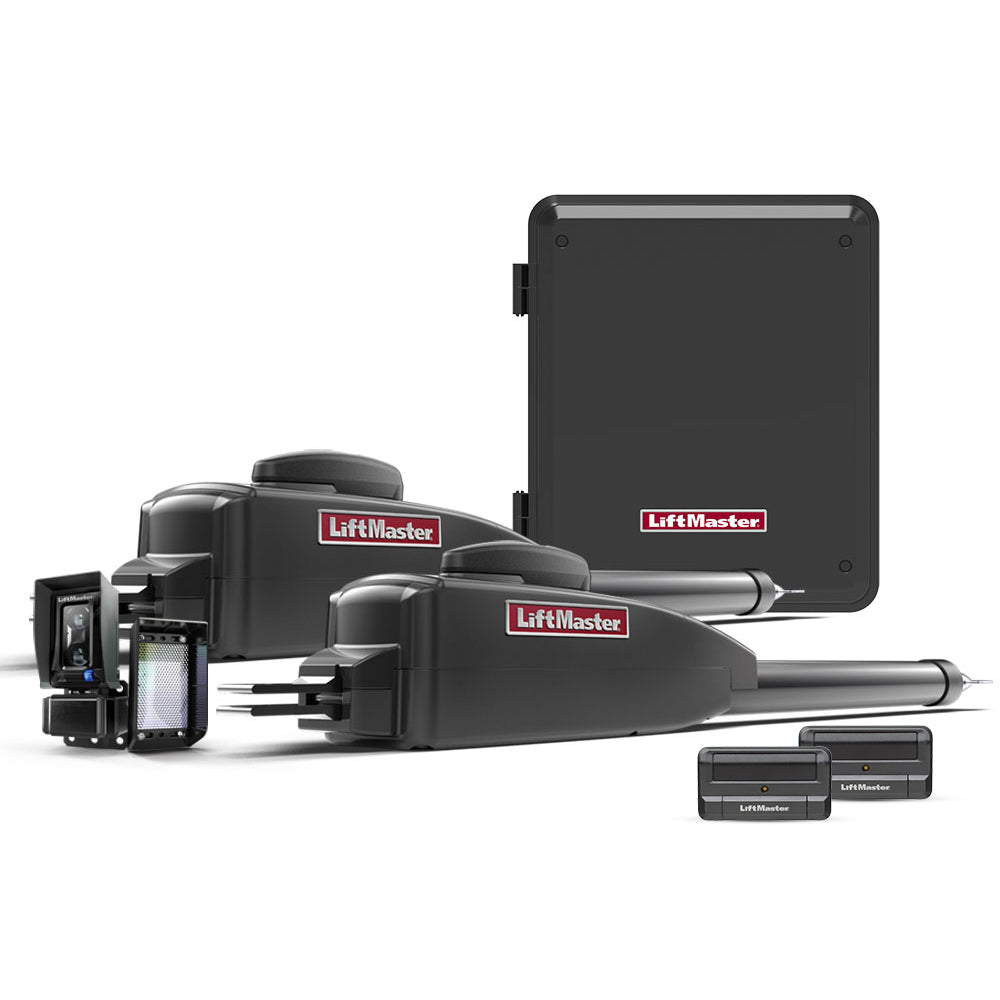Keeping the Night at Bay
As night falls and doors close, it's natural to wonder what might be lurking at the edges of your property. What is just beyond your line of sight? Could there be someone—or something—moving in the shadows? Fortunately, with proper perimeter lighting, such concerns can remain firmly in the past.
Fortunately, since quite a few years ago, such concerns are a thing of the past when it comes to having proper perimeter lighting installed in your home or property.

Perimeter Lighting: A Foundation of Security
Perimeter lighting is a crucial component of professional security for homes, gated communities, and commercial properties. By lighting up the boundaries, owners and managers create a safer environment for residents and visitors alike, deterring intruders and illuminating potential hazards. However, poorly installed or insufficient perimeter lighting can lead to increased security risks, such as higher crime rates, accidents, and a compromised sense of safety.
For gated communities, dark zones can allow intruders to enter undetected, making these areas attractive for illicit activities like vandalism or drug dealing. Dimly lit homes and businesses are also more vulnerable to break-ins. Beyond security, inadequate lighting poses safety risks, increasing the likelihood of accidents, such as tripping or falling.
In today’s All Security Equipment blog post, we’re sharing seven top tips to help you maximize perimeter lighting, transforming your property into a beacon of safety each night.
1. Use a Variety of Lights

Why a Variety of Lights is Important
Employing a diverse range of lighting fixtures is essential for effective perimeter security. Different lights serve unique purposes, illuminating various areas and creating multiple lines of defense against intruders.
Consider integrating these lighting types:
-
Floodlights: High-intensity lights ideal for covering large areas, like parking lots or driveways. They can be mounted on poles or buildings and often feature motion sensors for added security.
-
Wall-Mounted Lights: Wall-mounted fixtures are versatile fixtures for smaller areas like doorways, windows, and pathways. They often include motion sensors, timers, and adjustable intensities.
-
Solar-Powered Lights: Eco-friendly, solar lights offer a sustainable, cost-effective solution for remote or electricity-limited locations.
-
Low-Voltage Landscape Lighting: This subtle lighting creates a welcoming ambiance, illuminates pathways, and deters intruders from hiding in shadows.
By combining various lighting types—such as floodlights for large areas, wall-mounted lights for entry points, and solar-powered lights for remote zones—you can create a robust and efficient security system.
2 - Utilize Diverse Lighting Methods

Beyond a variety of fixtures, applying different lighting methods enhances security by adapting to your property’s needs:
A diverse range of methods will be essential for applying your multi-layered security perimeter. Different lighting methods serve distinct purposes, providing flexibility and adaptability to address various needs. By combining different approaches that adjust to the circumstances of your property or gated community, you will optimize the effectiveness of your perimeter lighting and deter potential intruders.
-
Standby Lighting: Provides low-level, constant illumination throughout the night, creating a sense of vigilance.
-
Continuous Lighting: Maintains high-intensity illumination all night, offering maximum visibility but with higher energy consumption.
-
Controlled Lighting: Allows adjustments in intensity or duration, optimizing energy usage while reducing light pollution.
-
Area Lighting: Targets specific zones, such as parking lots or entryways, to focus security efforts efficiently.
A mix of these methods can make your perimeter lighting more effective. For example, standby lighting can serve as a base level of illumination, while controlled lighting can increase intensity in high-risk areas.
3 - Strategic Light Placement

Properly placing lighting fixtures in strategic locations is essential to maintain security, enhance visibility, and reduce accidents. Here are key areas to consider:
Key Areas to Illuminate:
-
Walkways: Well-lit paths reduce trip hazards for residents and visitors.
-
Front Door and Entry Points: Illuminate doorways and windows to deter intruders.
-
Garden Pathways: Light up these areas to prevent hidden spots and improve safety.
-
Exterior Areas and Amenities: External amenities, like pools or patios, should be well-lit for security.
-
Driveway: Properly lit driveways improve vehicle visibility and deter potential intruders.
4 - Invest in Motion Sensor Security Lights
Once you’ve covered your methods and placements of lights there’s also an extra investment that you should consider - Motion Sensor Security Lights.
Motion sensor lights are an invaluable addition to any security system. These energy-efficient fixtures stay dormant until movement is detected, conserving power while providing a burst of illumination that can startle intruders and alert property owners. Motion sensors offer early detection, energy savings, and improved safety.
5 - Perform Regular Electrical Checks

Ensuring uninterrupted power is crucial for perimeter lighting. Loose or damaged connections can cause outages, flickering lights, or even electrical hazards. Routine maintenance helps prevent these issues, ensuring reliable lighting. Key steps include:
How to Conduct Regular Connection Checks
-
Visual Inspection: Look for signs of damage, corrosion, or loose connections.
-
Tighten Connections: Secure any loose connections with appropriate tools.
-
Check for Damage: Consult an electrician if you find damaged wiring.
-
Test the Lighting System: After repairs, test your lighting system to confirm all fixtures work properly.
By conducting regular connection checks, you can help to ensure the reliability and safety of your perimeter lighting system. This proactive approach can prevent costly repairs, reduce the risk of electrical hazards, and enhance the overall security of your property.
6 - Trim Vegetation to Avoid Light Obstructions
Overgrown plants can block light from reaching key areas, reducing your perimeter lighting's effectiveness. Regular pruning keeps lights unobstructed, illuminating your property thoroughly.
Tips for Effective Vegetation Pruning
-
Scheduled Maintenance: Inspect your property regularly to spot obstructing vegetation.
-
Proper Techniques: Use suitable pruning methods to maintain plant health.
-
Hire Professionals: If needed, consider hiring a landscaper for optimal results.
By trimming overgrown vegetation, your lights can function more effectively, reducing hiding spots for intruders.
7 - Commit to Regular Maintenance
Consistent maintenance is essential to ensure your lighting system’s optimal performance and longevity. By inspecting and maintaining your lights, you can prevent costly repairs, improve security, and extend fixture life. Benefits include:
Benefits of Regular Maintenance
-
Identifying Problems Early: Spot issues like faulty bulbs or loose connections before they worsen.
-
Reducing Repair Costs: Addressing issues early can save money in the long term.
-
Optimal Performance: Maintenance ensures your system is always at peak performance.
-
Extended Lifespan: Proper care helps fixtures last longer, reducing replacements.
A Well-Lit Tomorrow
Implementing these seven tips will transform your property into a safer, more secure environment. Remember, a well-lit perimeter isn’t just a security measure—it’s an investment in peace of mind.
For further questions on security lighting or to explore cutting-edge perimeter security solutions, our customer service team at All Security Equipment is here to assist!












